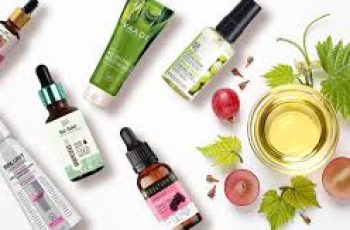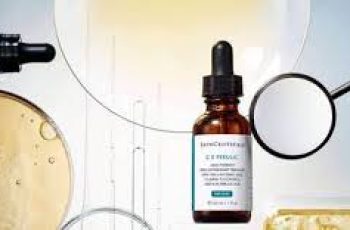
Formaldehyde Free Skin Care and Formaldehyde Allergy: A Comprehensive Guide
Introduction to Formaldehyde Allergy in Skin Care Products
Formaldehyde is a well-known allergen found in many personal care products. People with sensitive skin or allergies often need to avoid it to prevent reactions. This guide will help you understand why.
If you have a formaldehyde allergy, avoiding skin care products with formaldehyde or formaldehyde-releasing preservatives (FRPs) is crucial. These preservatives are common but can trigger allergic reactions.
Many cosmetics use formaldehyde releasers to keep products fresh and free from bacteria. But they can cause irritation or worse in sensitive users, making awareness key for safe skin care choices.
This guide explains what formaldehyde is, why it’s used, how to spot it on labels, and how to steer clear of it to protect your skin health.
What is Formaldehyde and Why Is It Used in Skin Care?
Formaldehyde is a colorless chemical with a strong odor, widely used in industries, including cosmetics. In skin care, it’s mainly used as a preservative to stop bacteria and mold from growing.
Preservatives are vital in personal care products because they prevent contamination and extend shelf life. Without them, products could become unsafe or spoil quickly.
However, formaldehyde is a known irritant and allergen. Many people develop skin sensitivity or allergic reactions from exposure to it, especially with repeated use.
Due to its reputation, formaldehyde itself is rarely listed on product labels. Instead, companies use formaldehyde-releasing preservatives (FRPs) that slowly release small amounts of formaldehyde over time.
These slow-releasing preservatives help protect products but can still cause allergic reactions in sensitive individuals.
Common Formaldehyde-Releasing Preservatives to Watch For
If you have a formaldehyde allergy, knowing the names of common formaldehyde releasers is essential. They may be hiding in your favorite products under various names.
Here’s a list of ingredients often used as formaldehyde-releasing preservatives (FRPs):
2-bromo-2-nitropropane-1,3-diol, Bromonitropropane diol (Bronopol), Diazolidinyl urea (Germall II), DMDM hydantoin, Glyoxal, Imidazolidinyl urea (Germall), Polyoxymethylene urea
Quaternium-15, Sodium Hydroxymethylglycinate
These ingredients can be found in shampoos, skin creams, nail products, hair treatments, and more. Always check product labels carefully if you are allergic.
Even “natural” or “organic” products can contain FRPs, so never assume a product is safe without reading the ingredients.
Beauty Products Commonly Containing Formaldehyde or Formaldehyde Releasers
Formaldehyde and its releasers are not limited to skin creams. They appear in many beauty products, including:
Nail polishes and nail hardeners often contain formaldehyde to prevent microbial growth.
Hair treatments like keratin straighteners may contain formaldehyde or release it when heated.
Eye makeup such as mascara, eyeliners, and foundations sometimes include FRPs, posing risks to sensitive skin around the eyes.
During the COVID-19 pandemic, increased use of masks and sanitizers containing formaldehyde raised allergy cases, highlighting the need for caution.
Long-term exposure to these products can worsen allergies and skin sensitivity, so avoiding them is especially important for those prone to reactions.
How Formaldehyde and FRPs Trigger Allergic Reactions
Formaldehyde and FRPs are among the top allergens causing contact dermatitis—skin inflammation due to irritation or allergy from chemicals.
Common symptoms of formaldehyde allergy include:
Redness, itching, and rash at the product application site.
Swollen, itchy eyelids when using eye makeup with FRPs.
Blistering, cracking, or extreme dryness from repeated exposure.
Inflamed, painful skin as reactions worsen over time.
People who use cosmetics or hair treatments containing these chemicals often experience such symptoms, which can grow severe with continued exposure.
Formaldehyde can sensitize the skin, meaning repeated contact makes allergic reactions worse over time, increasing the need to avoid these products.
Impact of Formaldehyde on Sensitive Skin and Pre-Existing Conditions
Individuals with sensitive skin or conditions like eczema, psoriasis, or rosacea are especially vulnerable to formaldehyde. Their skin barrier is already fragile, making reactions more severe.
Formaldehyde can cause flare-ups, worsen inflammation, and trigger itching and discomfort in sensitive skin types.
It is also important to understand formaldehyde’s cumulative effect. Multiple exposures over days or weeks build up sensitivity, leading to more intense allergic reactions.
Avoiding formaldehyde and FRPs entirely is the safest approach for sensitive or compromised skin to prevent worsening symptoms.
How to Identify Products That Contain Formaldehyde
Shopping with a formaldehyde allergy means becoming a label detective. Here are ways to identify products with formaldehyde or FRPs:
Read labels thoroughly for the chemical names listed above.
Look for products labeled “formaldehyde-free” or “FRP-free.”
Avoid products with vague or missing ingredient lists.
When in doubt, ask manufacturers for ingredient details or safety data.
Consult dermatologists or allergy specialists for product recommendations.
Beware of terms like “preservative” without further explanation, as this can hide formaldehyde releasers.
Always double-check new products before use, even from trusted brands, since formulas may change.
Managing a Formaldehyde Allergy: Tips and Best Practices
If you have a formaldehyde allergy, managing it effectively is key to keeping your skin healthy. Here are some steps to take:
Patch Test New Products: Apply a small amount to your forearm and wait 48 hours for any reaction before using broadly.
Consult a Dermatologist: Specialists can perform patch tests to confirm allergies and suggest safe products.
Choose Allergen-Free Skin Care: Look for formulations specifically made for sensitive skin and free from formaldehyde and harsh preservatives.
Keep Your Skin Moisturized: Use soothing, fragrance-free moisturizers to calm irritation and repair the skin barrier.
Avoid High-Risk Products: Steer clear of nail hardeners, keratin hair treatments, and eye makeup if you are highly sensitive.
Stay Informed: New preservative systems and safer formulas emerge regularly. Keep updated on ingredient safety and recall alerts.
By following these guidelines, you can reduce flare-ups and enjoy a more comfortable skin care routine.
Conclusion: Living Confidently with a Formaldehyde Allergy
A formaldehyde allergy may seem daunting, but with the right information and vigilance, it’s manageable. Careful product selection and label reading empower you to avoid triggers and keep your skin calm.
Focus on “formaldehyde-free” products, consult healthcare providers, and maintain a gentle skin care routine tailored to your needs.
Your skin deserves safety and comfort. By understanding formaldehyde’s risks and learning how to identify and avoid it, you take charge of your skin health.
Remember, if you suspect a formaldehyde allergy, seek professional advice and consider testing. With knowledge and care, you can navigate skin care safely and confidently.


